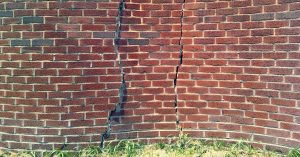Compensation for humidity in the basement

In previous articles we studied possible claims for dampness in homes. Specifically in the post Damp in homes and communities of owners We explained the problems derived from humidity of a different nature.
One of the causes that we pointed out there was the dampness in the basements and in the houses located on the ground floor of the buildings, as a result of leaks by capillarity.
Given the controversy that this problem generates, and the high number of affected people who come to our office for this reason, we have decided to address this issue in this separate article.
This type of conflict generally pits the interests of the owner against the community of owners. Since from our Department of Real Estate Law we have defended to one and the other on numerous occasions, we will give below our impression of the decisions that the courts usually adopt.
The appearance of dampness in newly built buildings deserves a different treatment. In this case, the responsibility of the building promoter or construction company could be assessed. However, humidity in the basement usually affects old buildings.
Capillary leaks
If you live on a ground floor and have been noticing stains in the lower areas of the wall, if the flooring has suffered some type of damage such as lifting the parquet or breaking tiles, if the skirting board has detached from the wall or the door frames show signs of humidity, it is surely suffering from capillary humidity.
With greater certainty we will be able to warn that this is the cause of the damage, if these same symptoms are repeated in the rest of the adjoining houses on the ground floor of the building, or in the common areas of the stairs and the portal.
It is undoubtedly the most common cause of damp in the basement. Its explanation is found in the defective quality of the construction materials. That is why the problem appears more frequently in old buildings located in areas with higher levels of groundwater. Water is capable of rising from the subsoil and reaching the structure of the building when the foundation does not fulfill its sealing function.
La comunidad de propietarios es responsable
Explicábamos en el artículo anterior «Humedades en viviendas y comunidades de propietarios» que la Comunidad de propietarios es responsable del mantenimiento de los elementos comunes. Y explicábamos qué elementos de una edificación deben considerarse de naturaleza común. En concreto el suelo de un edificio lo es, tal y como se contempla expresamente en el art. 396 de nuestro Código Civil:
“Los diferentes pisos o locales de un edificio o las partes de ellos susceptibles de aprovechamiento independiente por tener salida propia a un elemento común de aquél o a la vía pública podrán ser objeto de propiedad separada, que llevará inherente un derecho de copropiedad sobre los elementos comunes del edificio, que son todos los necesarios para su adecuado uso y disfrute, tales como el suelo, …”
La jurisprudencia ha respaldado la consideración del suelo como elemento común. A modo de ejemplo la Sentencia de la Sala 1ª del Tribunal Supremo de 13 de mayo de 1976, de 17 de junio de 1998 o la de 5 de julio de 2010.
Dado el carácter común del suelo es la comunidad de propietarios del inmueble en cuestión la que debe reparar y asumir los costes de reparación exigidos por la actora. Es claro el art. 10 de la Ley de Propiedad Horizontal al imponer, sin necesidad de acuerdo previo de la Junta de propietarios, a la Comunidad de Propietarios la obligación de reparación, mantenimiento y conservación de los elementos comunes de un edificio:
- “1. The following actions will be mandatory and will not require the prior agreement of the Board of Owners, whether or not they imply modification of the constitutive title or the statutes, and are imposed by the Public Administrations or requested at the request of the owners:
- a) The works and works that are necessary for the adequate maintenance and fulfillment of the duty of conservation of the property and its services and common facilities, including in any case, those necessary to satisfy the basic security requirements , habitability and universal accessibility, as well as the ornamental conditions and any others derived from the imposition, by the Administration, of the legal duty of conservation.”
How to complain to the community of owners
It is a common mistake to consider that any work carried out by the owner of the house affected by humidity may be passed on to the community of owners. It is advisable to consult with lawyers specialized in real estate law before carrying out repair works.
In this office we had the specific case of an owner who carried out some works to prevent subsoil leaks from affecting his home, in that litigation we defended the community of owners. The owner made the mistake of carrying out these works on the private elements of the house such as the parquet, the interior walls, the bathrooms, etc. He provided the property with insulating elements so that humidity did not affect habitability.
The court rejected the owner’s claim that he intended to pass on the cost of the repairs to the community of owners, and accepted our argument that the works were carried out on private elements to achieve better insulation, assuming an improvement to the home, and not the repair of a common element or specific damage caused by a breakdown.
The courts have established that the community of owners is obliged to repair the real cause of the damage, and they call these repairs “necessary works”.< /p>
However, the works carried out on private elements that exceed the strict repair of the damage caused, even if their purpose is to isolate the house from humidity, will be considered “improvements< /strong>” of the home and may not be passed on to the community of owners. This has been considered by several judgments such as the SAP Madrid of September 25, 2012 or the SAP Madrid of September 23, 2013.
The foregoing does not mean that the owner cannot carry out the works on his behalf to later claim its cost when the community refuses to carry out the repairs.
Now, the sentences cited above, admit such claims only to the extent that the owner has faced the repair of the cause of the damage, making the repair of common elements.
But in no case will insulation works on private elements have the same treatment, since they imply an improvement of the specific home, and not the repair of the damage in the common element.
VideoBlog
Claim the community of owners for humidity in basements and storage rooms






